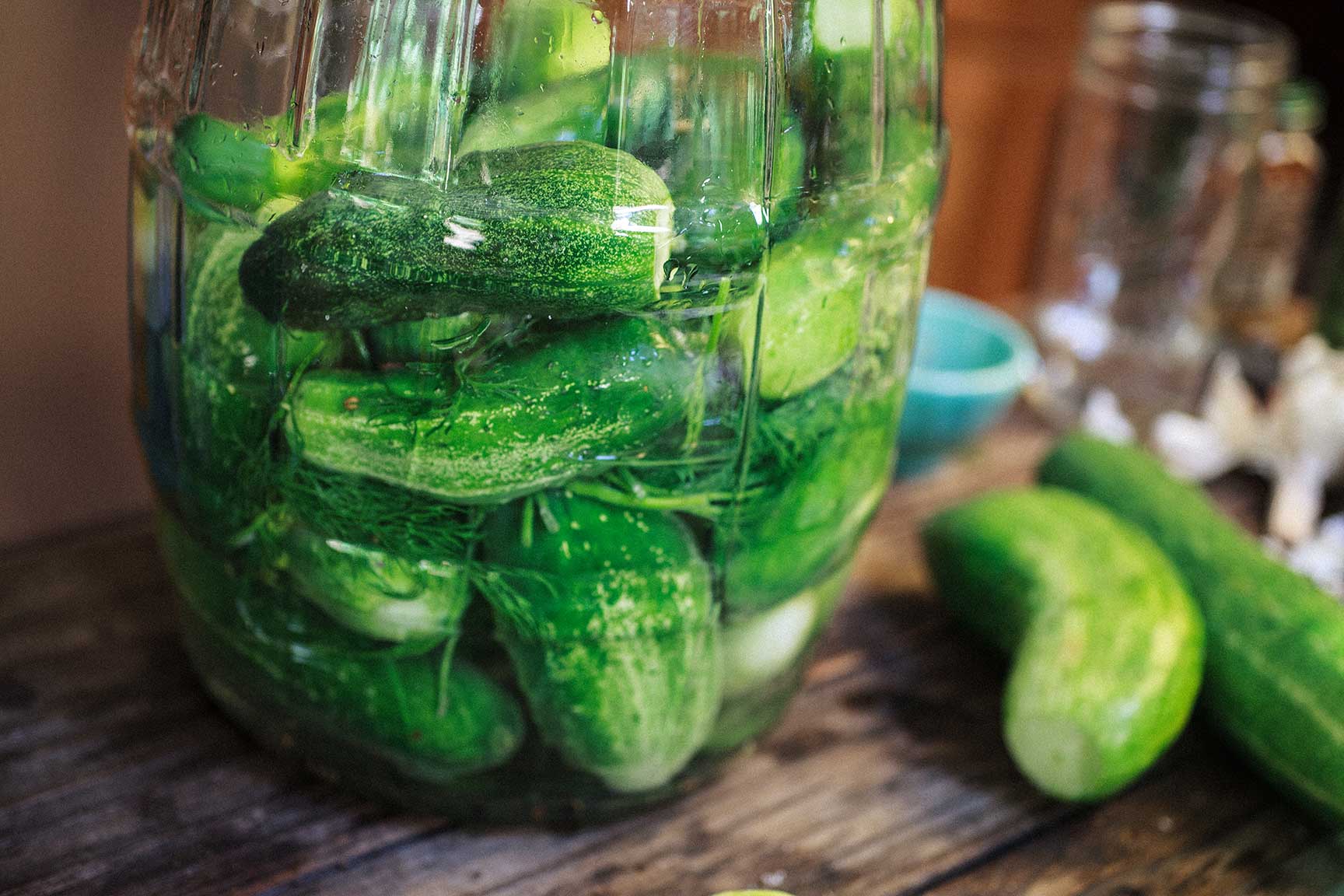- Continue Shopping
- Your Cart is Empty
Fermented Garlic Dill Cucumber Pickles

What You'll Need
Ingredients
- 8 lbs pickling cucumbers
- 2 tsp. red pepper flake
- 1 bunch dill (roots trimmed)
- 7 cloves of garlic
- 2 dried bay leaves
- 2 tbs. pickling spice
- 9 tbs. good sea salt
- 1 gallon of spring water
So many cucumbers! When you have too many cukes, you know you're in a pickle! And what a delicious pickle it will be . . .
This recipe uses the fermented pickling method. Not familiar with the fermentation? No worries. Learn more from our home pickling basics article.
Directions
This recipe will make 8 pounds of garlic dill cucumber pickles.The 2.5 Gallon Barrel Jar holds this volume perfectly, and the XL Vegetable Fermentation Kit is just the thing to top it off to ensure a clean, easy ferment.

1) Prepare Your Ingredients
Wash and trim the ends of the cucumbers, taking especial care to remove the blossom end, which contains enzymes that can make your pickles soggy. Peel the garlic cloves, and ready the rest of the ingredients.

2) Pack Your Jar with Cucumbers & Spices
Start stacking your cucumbers like logs inside the barrel jar, packing them tightly to maximize your space. When the jar is half full of cucumbers, add the pickling spice, bay leaf and red pepper flake. Continue to stack the remaining cucumbers until the jar is full.

3) Prepare the Brine
Mix the Sea Salt with 1 gallon of water to dissolve. Pour the resulting brine over the cucumbers, submerging them completely.
4) Ensure a Good Seal
Place the brine cup on top of the cucumbers, to keep them submerged beneath the brine. Screw on the fermentation kit lid and make sure your gasket is in place. The seal must be tight enough to create an anaerobic environment. Insert your sanitized airlock into the airlock hole.

5) Let it Ferment
Allow to ferment in a warm place for 1-3 weeks. The longer you ferment the pickles, the more sour and strong the flavor will be. Your ferment will be ready to eat in 5-7 days, depending on the conditions in your house, but you can allow it ferment for the longer amount of time, if you like a more sour pickle. The shorter length of time will result in a crunchier pickle; it's a continuum between a crunchier vs a more sour pickle. Find your own sweet/sour spot!
When your pickles have reached the desired flavor, pack them into smaller jars, cover them with brine, and store them, covered, in the refrigerator.
TIP: The warmer it is in your home, the faster your veggies will ferment. The cold of the fridge stops fermentation.
Enjoy your delicious, probiotic, fermented pickles!

Over to You
It’s part of our mission here at Mountain Feed to help you make delicious, sustainable, homemade food more often. Stop by and say hello on Facebook, Twitter, Instagram or Pinterest. Or, as always, you can do it the old fashioned way and come by the store to speak with one of our in-house experts.
Keeping a great journal leads to delicious results! Get inspired by new recipes, expert articles and homemade food adventures in our Monthly Journal.
This article is part of the August 2015 Issue of our Monthly Journal. Sign up for the Journal to be the first to receive all our new recipes and content each month.
